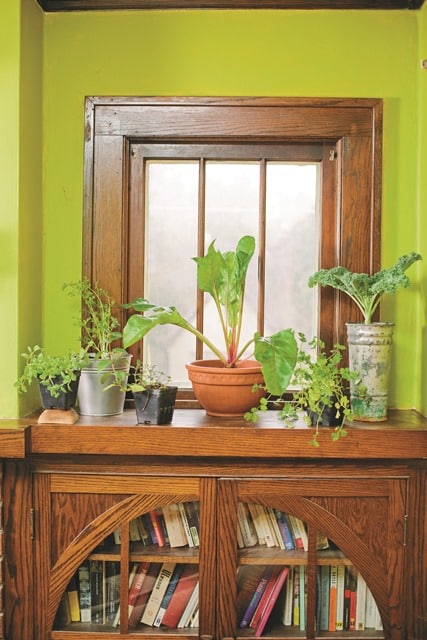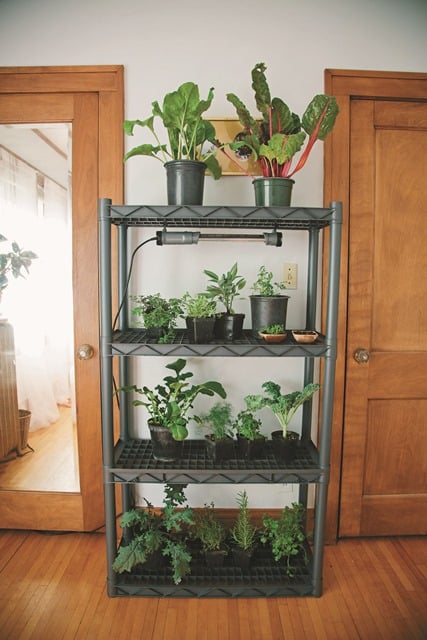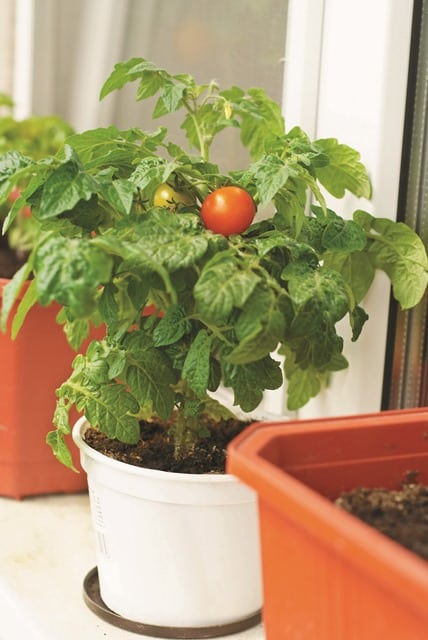It’s Earth Day weekend, and while spring has sprung and you may feel like planting veggies, if you don’t have outdoor growing space, it might seem like a bummer to have an itchy green thumb. The good news is that you can grow just about anything indoors, and the book Indoor Kitchen Gardening: Turn Your Home Into a Year-Round Vegetable Garden, will tell you how to do just that.


Millard’s book shares the basics on indoor growing, including how to grow various veggies and use them, as well as troubleshooting tips for issues such as pests and diseases. The book also mentions the benefits of what you don’t have to battle when growing veggies indoors—including weeds, birds, rabbits and squirrels.Here is a sneak peek into some of the indoor gardening wisdom you’ll find in Millard’s book.
Requirements for indoor growing. Several ingredients go into successfully growing an indoor veggie garden. They are light, including natural and artificial, airflow, which is an often missed ingredient, sufficient room to grow, proper watering and drainage and humidity control.



(Crystal Liepa)
The author of the book, Elizabeth Millard, began enjoying fresh-from-the-indoor-kitchen-garden produce during winters in Minnesota. She started with microgreens, radishes and pea shoots and branched out from there to discover that she could grow just about anything indoors, including beets and mushrooms.
“The experience went against everything I’d believed for most of my life—that indoor vegetable growing was for experts who possessed deeply green thumbs, and that anything edible raised inside a house had to be grown in some extensive, costly system,” says Millard, who discovered that with the right mix of water, airflow, light and attention, veggies can flourish as well as houseplants.

(Crystal Liepa)

(Crystal Liepa)
Lighting tips. As Millard promises in her book, you don’t need special, super expensive lighting to grow an indoor veggie garden. All you require are full-spectrum fluorescent bulbs that can be put into standard metal fixtures. This section also explains when and how to give plants that are leggy and spindly a burst of red or orange light, which will stimulate growth and flowering, or how to use blue or green lights to get short and stocky plants to grow. Crops ideally suited to indoor growing. This part of the book tells you which crops are easier to grow indoors than others. Good starter crops include microgreens, sunflower shoots, pea shoots, sprouted grains and many herbs, like rosemary, thyme, mint, parsley, lemongrass, chervil, basil, cilantro, oregano and sage. Once you get the hang of these, you can transition to other tasty vegetables like lettuce, arugula, spinach, radish, tomato, potato and hot pepper.
(Crystal Liepa)
Indoor seeding. This section gives tips for choosing seeds and growing them indoors. You’ll discover how to plant them, including what soil to use. There are also instructions for hastening germination and maintaining healthy seedling growth. Julie Bawden-Davis is a garden writer and master gardener, who since 1985 has written for publications such as Organic Gardening, The American Gardener, Wildflower, Better Homes and Gardens and The Los Angeles Times. She is the author of seven books, including Reader’s Digest Flower Gardening, Fairy Gardening, The Strawberry Story Series, and Indoor Gardening the Organic Way, and is the founder of HealthyHouseplants.com.